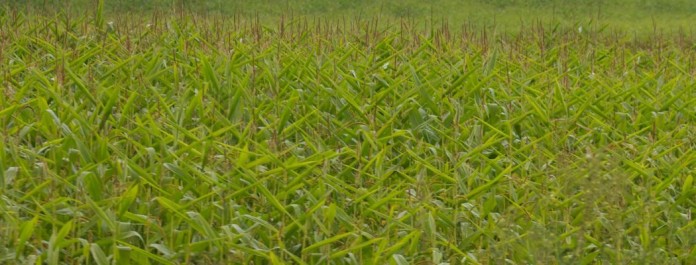The ugly truth is that summer is in its last innings. When we take our balcony coffee break, we notice yellow leaves on some of the maple trees in the front lawn. Canada geese are starting their first practice flights. I can’t tell one honk from another, but somewhere in there one goose is telling another he is ready to drop back and rotate to a new leader. One day soon, the sun will set exactly on Windsor Road and fall will start.
The list of summer goals is too long for summer to be over. We never got the gate posts built. There is painting undone. The stack of target loads and clay birds is untouched. When the ex-kids came home, we spent our time with handguns instead. I never trimmed around the pond even once.
Farmers’ lists
For the farmers, the top item on the “to-do” list is “market grain.” Local farmers, when pressed to admit, still have a little of this and a lot of that in the bins. Corn prices were disappointing, then interesting, then falling again before the trigger was pulled. We are at the embarrassed point in grain marketing, when producers don’t want to admit how much is left.
Today is “turnaround Tuesday” on the Chicago Board of Trade once again. Today, Aug. 25, we started off higher and are now up 6 cents for corn and 12 cents for beans in early trading. I wish it were because there was good grain news. Oh, the Midwest Crop Tour of last week does think the corn crop is overestimated by USDA, but this bounce has more to do with “outside markets.”
Yesterday, grain markets started out very negative as a reaction to the plunge in the equity markets. The New York Stock Exchange was down 1100 points on the Dow a few minutes after the open, and that was hard on the grain markets. As the Dow recovered, grain prices came back.
December corn futures were off 12 cents at one point, but finished up more than three cents. The November soybeans were down more than 30 cents for awhile, and only came back to a close that was down 15 1/2 cents.
There is some reason why the lower stock market caused lower grain prices, and why we have to be sensitive to foreign news right now. The Chinese stock market, which rallied 100 percent last year, is now melting. The Chinese are cutting the exchange rate of their currency to make their goods more competitive in world markets. That hurts the value of U.S. companies that sell goods in China. That would also include the grain marketing firms that sell grain in China.
The value of our farm goods goes down as they devalue the currency. Also, the ability to pay for our goods is weakened in a weaker economy.
The answer to tough times in China has historically to make the people stop eating meat. This means less demand for soybeans and corn.
Poor timing
The “outside news” comes at a time when we are trying to determine what the late summer weather will do to our crops and while we are digesting the idea that USDA might have over-estimated the crops. The Midwest Crop Tour of last week concluded that the crops were not as big as USDA thinks. That may or may not be true. A bad field here and there really stick out. Ohio, Indiana, and Missouri remain the problem states, and it is hard for those of us in those states to believe that a big crop is coming.
The current weather is adding to that belief. After we were buried by excessive water in the spring, we are now being burned by dry weather. I woke up this morning to the sounds of a nice gentle shower. I had visions of it lasting all day and doing some good. It lasted 10 minutes, and the sun has already erased all signs that it ever rained.
A Trumbull County farmer told me yesterday that the corn behind his house already was hanging the ears down in the part of the field where there was gravel. That crop is done, and it finished in the dry weather. Soybeans are now filling pods, and the beans need the help of rain. Beans, especially, are subject to big yield drops if weather is not just right at critical days of development.
So, there are questions out there to be answered. The ugly one is, when do I sell this crop? In Ohio, we have the worst combination of marketing circumstances this year — a poor crop in a good crop year (for everyone else).
STAY INFORMED. SIGN UP!
Up-to-date agriculture news in your inbox!












